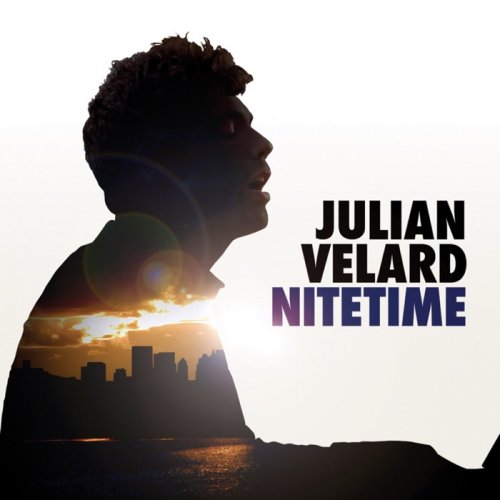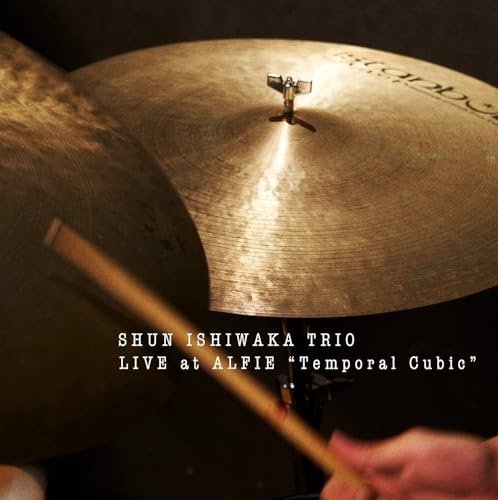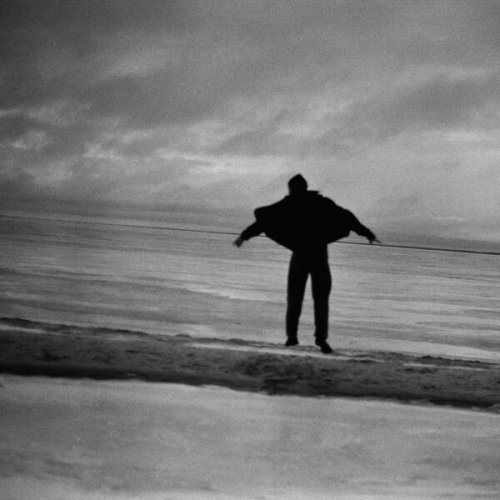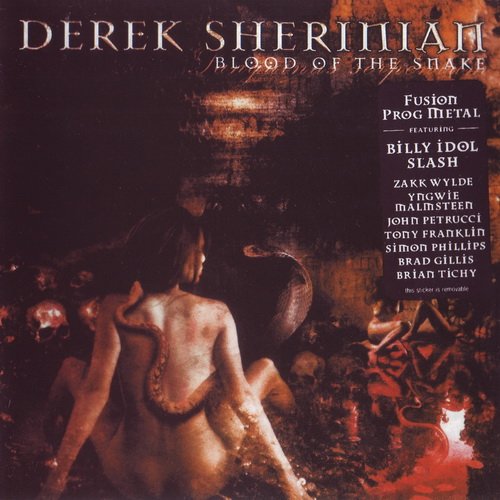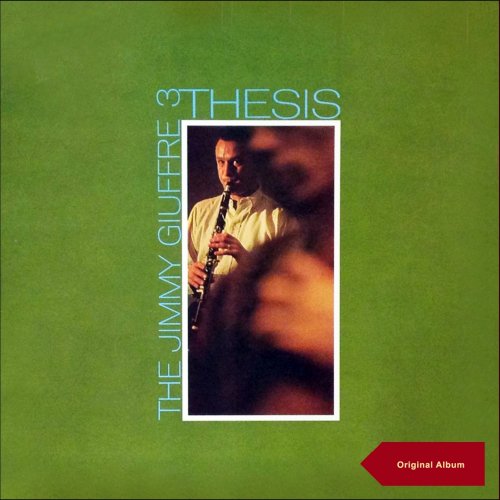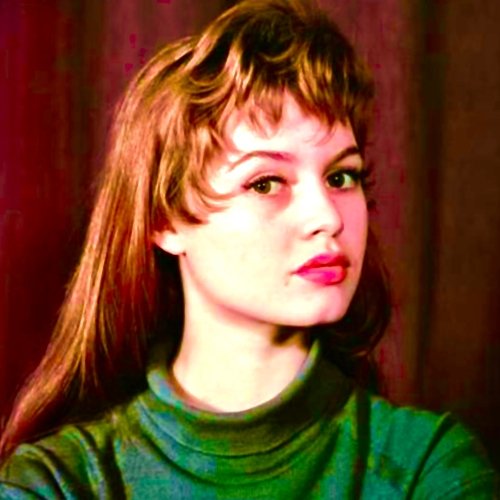Howard Shelley, Hilary MacNamara - Rachmaninov: Piano Suites Nos. 1 & 2 (2005)
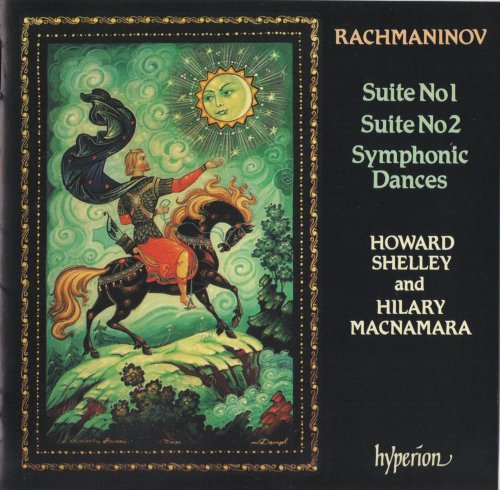
Artist: Howard Shelley, Hilary MacNamara
Title: Rachmaninov: Piano Suites Nos. 1 & 2
Year Of Release: 2005
Label: Hyperion
Genre: Classical
Quality: FLAC (image+.cue,log,scans)
Total Time: 01:17:17
Total Size: 281 Mb
WebSite: Album Preview
Tracklist: Title: Rachmaninov: Piano Suites Nos. 1 & 2
Year Of Release: 2005
Label: Hyperion
Genre: Classical
Quality: FLAC (image+.cue,log,scans)
Total Time: 01:17:17
Total Size: 281 Mb
WebSite: Album Preview
01. Suite No. 1 ("Fantaisie-tableaux") for 2 pianos in G minor, Op. 5: Barcarolle [0:07:30.60]
02. Suite No. 1 ("Fantaisie-tableaux") for 2 pianos in G minor, Op. 5: La nuit . . . L'amour [0:06:27.13]
03. Suite No. 1 ("Fantaisie-tableaux") for 2 pianos in G minor, Op. 5: Les larmes [0:05:17.12]
04. Suite No. 1 ("Fantaisie-tableaux") for 2 pianos in G minor, Op. 5: Paques [0:03:14.33]
05. Suite No. 2 for 2 pianos in C major, Op. 17: Introduction (Alla marcia) [0:04:10.70]
06. Suite No. 2 for 2 pianos in C major, Op. 17: Valse (Presto) [0:06:19.67]
07. Suite No. 2 for 2 pianos in C major, Op. 17: Romance (Andantino) [0:06:30.58]
08. Suite No. 2 for 2 pianos in C major, Op. 17: Tarantelle (Presto) [0:06:11.00]
09. Symphonic Dances, for orchestra (or 2 pianos), Op. 45: Non Allegro - Lento - Tempo 1 [0:10:47.00]
10. Symphonic Dances, for orchestra (or 2 pianos), Op. 45: Andante con moto (Tempo di valse) [0:08:26.05]
11. Symphonic Dances, for orchestra (or 2 pianos), Op. 45: Lento assai - Allegro vivace - Lento assai - Allegro vivace [0:12:26.47]
Performers:
Howard Shelley - piano
Hilary MacNamara – piano
This is a welcome re-release from Hyperion on its budget Helios label. When these performances first appeared in 1990, critical opinion was divided as to their merits. The back of this CD quotes statements of high praise from the American Record Guide and Classic CD, among others. From memory, the review that appeared in Gramophone Magazine was harsh in its criticism. For my part, I incline more to the former view. This disc has much to recommend it.
The program opens with Rachmaninov's Suite No. 1, an early work by a young composer in thrall to Tchaikovsky. Shelley and MacNamara play it with charm. The opening Barcarolle is a touch too fleet, but pretty nonetheless and given a lightness of touch. A beautiful wash of sound underpinning the melody in the second movement gives way to ghostly sounds in the third. Only the finale is a little disappointing – this music tends to plod unless played with real fantasy, and the pianists don't let themselves go here as they should.
The Second Suite is also given a lovely performance, and indeed comes off better than the first here. This more mature work elicits a more sympathetic response from the pianists, with Shelley in particular relishing the characteristic singing lines that are quintessential Rachmaninov. The playing throughout is characterful and lyrical, and builds to a strong conclusion.
The final work on the disc is the largest, the last to be composed and receives the best performance. Rachmaninov wrote his Symphonic Dances after the failure of his Third Symphony, and he did not anticipate that his next big orchestral score would find many backers - the dedicatee, Eugene Ormandy, excepted. The piano version of the piece was written from the short score with the goal of presenting the piece in performance in a series of two piano recitals that Rachmaninov planned to give with Horowitz. According to Robert Matthew-Walker's excellent liner notes, Rachmaninov also suggested to his record company, RCA, that it might want to record this piece with Horowitz and himself at the keyboard. What a shame that RCA did not!
Shelley and MacNamara, however, have recorded it, and beautifully. They clearly take the piece at its title, as this is very much a symphonic reading, with attention given to colouring the various "instrumental" lines and judicious use of tempo fluctuation. The opening builds nicely to the statement of the first subject. I particularly liked the way both pianists pulled back and savoured the wash of notes that underlines the saxophone melody from about [2:46]. The middle dance opens with chords that sound more melancholy than menacing, but once the hurdy-gurdy kicks in the sense of unease is palpable. There is also a wonderful breath-catching moment at [2:40]. Then to the finale, which here bristles with syncopations and builds inexorably to a blazing conclusion. Anyone who knows and loves this piece in its orchestral form should get to know it in this alternative version, and I cannot imagine that you would be able to get a better reading this at the price. That said, I understand that Ashkenazy and Previn have recorded this repertoire for Decca to great acclaim, but I believe their performances are only available as a Double Decca release.
Reservations? The main problem with the disc is the sound quality. The balance between the two pianos - always difficult to get right - favours Shelley's instrument and sets MacNamara's back a little too much. The recorded sound itself is also more diffuse than one would expect from Hyperion, and the upper registers of the two pianos have a slight tendency to brittleness.
Sonic reservations aside, though, this is a well filled disc that is very good value for its asking price. If the repertoire appeals, do not hesitate. -- Tim Perry
The program opens with Rachmaninov's Suite No. 1, an early work by a young composer in thrall to Tchaikovsky. Shelley and MacNamara play it with charm. The opening Barcarolle is a touch too fleet, but pretty nonetheless and given a lightness of touch. A beautiful wash of sound underpinning the melody in the second movement gives way to ghostly sounds in the third. Only the finale is a little disappointing – this music tends to plod unless played with real fantasy, and the pianists don't let themselves go here as they should.
The Second Suite is also given a lovely performance, and indeed comes off better than the first here. This more mature work elicits a more sympathetic response from the pianists, with Shelley in particular relishing the characteristic singing lines that are quintessential Rachmaninov. The playing throughout is characterful and lyrical, and builds to a strong conclusion.
The final work on the disc is the largest, the last to be composed and receives the best performance. Rachmaninov wrote his Symphonic Dances after the failure of his Third Symphony, and he did not anticipate that his next big orchestral score would find many backers - the dedicatee, Eugene Ormandy, excepted. The piano version of the piece was written from the short score with the goal of presenting the piece in performance in a series of two piano recitals that Rachmaninov planned to give with Horowitz. According to Robert Matthew-Walker's excellent liner notes, Rachmaninov also suggested to his record company, RCA, that it might want to record this piece with Horowitz and himself at the keyboard. What a shame that RCA did not!
Shelley and MacNamara, however, have recorded it, and beautifully. They clearly take the piece at its title, as this is very much a symphonic reading, with attention given to colouring the various "instrumental" lines and judicious use of tempo fluctuation. The opening builds nicely to the statement of the first subject. I particularly liked the way both pianists pulled back and savoured the wash of notes that underlines the saxophone melody from about [2:46]. The middle dance opens with chords that sound more melancholy than menacing, but once the hurdy-gurdy kicks in the sense of unease is palpable. There is also a wonderful breath-catching moment at [2:40]. Then to the finale, which here bristles with syncopations and builds inexorably to a blazing conclusion. Anyone who knows and loves this piece in its orchestral form should get to know it in this alternative version, and I cannot imagine that you would be able to get a better reading this at the price. That said, I understand that Ashkenazy and Previn have recorded this repertoire for Decca to great acclaim, but I believe their performances are only available as a Double Decca release.
Reservations? The main problem with the disc is the sound quality. The balance between the two pianos - always difficult to get right - favours Shelley's instrument and sets MacNamara's back a little too much. The recorded sound itself is also more diffuse than one would expect from Hyperion, and the upper registers of the two pianos have a slight tendency to brittleness.
Sonic reservations aside, though, this is a well filled disc that is very good value for its asking price. If the repertoire appeals, do not hesitate. -- Tim Perry
DOWNLOAD FROM ISRA.CLOUD
Howard Shelley Hilary MacNamara Rachmaninov Piano Suites05 0902.rar - 281.9 MB
Howard Shelley Hilary MacNamara Rachmaninov Piano Suites05 0902.rar - 281.9 MB
